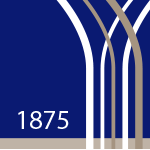| 040LINSL2 | Introduction to linguistics |
|---|---|

|
Language is one of the most important things that humans do. Our capacities for communication, abstract thought, creativity, and problem solving are often achieved through language. This makes language one of the features that define us as a species and what makes us unique. The aim of this teaching unit is to familiarize the students with what linguistics is, what it’s used for, and why it’s important to them as future Speech and Language Therapists. It also covers the major core subfields of linguistics: phonetics, phonology, morphology, syntax, semantics, narratives and pragmatics. These subfields are areas of active research in their own right, and are also prerequisite to working in a number of other subfields of linguistics which will also be covered in this teaching unit, including sociolinguistics, psycholinguistics, language variation and language change. This teaching allows students to become aware of the different components of language, to understand and use the basic linguistic terminology and concepts in their speech therapy practice as well as in their future research. Temps présentiel : 21 heures Charge de travail étudiant : 75 heures Méthode(s) d'évaluation : Examen écrit, Travaux pratiques contrôlés Référence : |
| Ce cours est proposé dans les diplômes suivants | |
|---|---|
| Bachelor in speech and language therapy |



 Université Saint-Joseph de Beyrouth
Université Saint-Joseph de Beyrouth